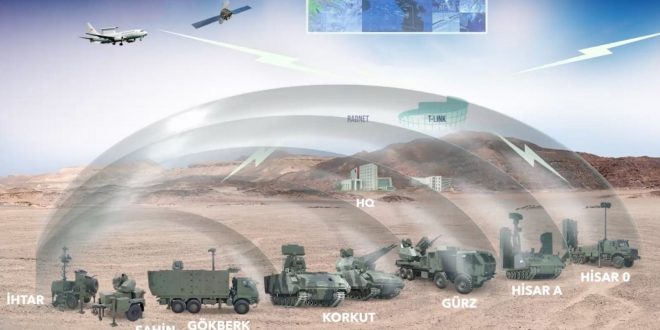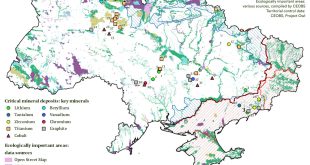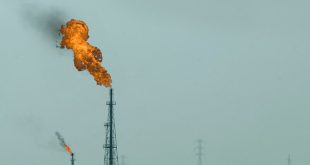On 7 August 2024, Turkish defense firm Aselsan’s CEO Ahmet Akyol unveiled on his X/twitter account the “Steel Dome” concept to build a network-centric, AI-assisted, layered air defense system that would protect the nation’s entire air space at all altitudes/ranges, against all types of airborne threats.[1] Although the concept resembles Israel’s famed “Iron Dome” missile shield, which is designed to intercept short-range rockets, shells and mortars at ranges of up to 70km, the Steel Dome is a “system of systems” that incorporates a holistic set of short, medium, and long-range missiles under the aegis of RADNET radar link management system, guided through HAKİM Air command and control system, as shown in Figure 1 below.
Figure 1: The “Steel Dome” (Çelik Kubbe) Air Defense System

Source: X, Ahmet Akyol, https://tinyurl.com/bddz2hd7.
The system comprises about half a dozen early warning, detection, identification, and classification modules linked to an electronic warfare (EW) suite and space-based satellites via T-link. In a sample configuration, this layer sits on top of the land-based interceptor consisting of a self-propelled Korkut anti-aircraft gun (4km range), Gürz autonomous air and missile defense system (10km range), Hisar family A/O/O+ low-to-medium altitude surface-to-air missile system (40km range), and Siper long-range area defense system (100km range). Aselsan’s solution partner, Roketsan, is developing an advanced version of Siper that will extend its range up to 200 km.[2]
This unified defense network with an AI-assisted, centralized command-control system is comparable to Israel’s four-layer air defense shield, which consists of Iron Dome (70km range), THAAD (200km range), David’s Sling (300km range), and Arrow (2,400km range)—albeit with Steel Dome’s shorter range and the missing component to intercept long-range ballistic missiles. The system is expected to operate under all weather conditions in multiple scenarios simultaneously to protect troops, critical platforms, and high-value assets such as ports and energy facilities with minimal supervision.[3] Also, the HAKİM command and control component will be interoperable with the planned Turkish Navy’s TF-2000 anti-air warfare guided missile destroyers, which host a 96-cell indigenous Vertical Launch System (MİDLAS) capable of launching a variety of advanced munitions,[4] as well as eight I-class frigates.[5]
A major challenge, however, is that whereas the Israeli system is battle-tested and its effectiveness proven with a 90%+ hit rate, the Steel Dome as an integrated, layered architecture defense system (IADS) is still under development by a consortium of Turkish firms, including the electronics giant Aselsan, rocket manufacturer Roketsan, and high-tech defense R&D house TÜBİTAK SAGE. Although individual platforms of the system have entered service, it will take until the 2030s for the desired coverage, situational awareness, precision, and guidance mechanisms to be tested and operationalized.
The system reflects Türkiye’s broader ambition to harness advanced technology in defense, showcasing a commitment to self-reliance, innovation, and export-driven industrial development. By leveraging AI and other emerging technologies, Türkiye seeks to establish a multi-layered defense network capable of neutralizing threats across various altitudes and distances. Steel Dome thus represents a transformative leap in the nation’s defense arsenal, combining cutting-edge technology with strategic foresight to address an evolving security landscape. This insight will explore the underlying motives behind Türkiye’s launch of the ambitious program aimed at providing a sophisticated, AI-supported, end-to-end air defense system.
Türkiye’s Regional Defense Posture and AI-Assisted Air Power
Türkiye enjoys a strategic depth on the east-west axis, situated on the southernmost flank of the NATO alliance, in a position to control critical waterways, energy supply lines, and trade routes between Europe, Asia, and the Middle East. That vast geographic stretch, however, becomes a disadvantage to building an effective, end-to-end national air defense umbrella. During the Cold War, Türkiye had an “on-demand”, fighter jet-heavy air power model, meaning that the Air Force’s basic mandate was limited to engaging enemy aircraft, suppressing enemy air defenses, and providing close air support for the army and the navy. It lacked a permanent, long-range, high-altitude air and missile defense shield to provide protection against ballistic missiles and advanced aircraft, including unmanned aerial vehicles (UAVs). According to a senior Turkish military source speaking on the condition of anonymity, “It can be considered as an offensively doctrinized army, especially its air power. Although this may be seen as contrary to Atatürk’s ‘peace at home, peace in the world’ aphorism, it is implemented in line with the ‘best defense is offense’ principle, considering the country’s location, neighbors, and regional developments”.[6]
After the end of the Cold War, Türkiye faced a different kind of threat—ballistic missiles, especially from regional adversaries. Saddam Hussein threatened to hit Turkish cities with Scud missiles during the First Gulf War in 1991, Iran developed a nuclear and ballistic missile program during the mid-to-late 2000s, and escalating tensions with Israel in the aftermath of the Syrian civil war raised the risk level even higher. Defenses against weapons that may fall into the hands of terrorist organizations due to instability and irregularities in the Middle East also appeared on the agenda.[7]
Historically, Türkiye’s air defense infrastructure has relied on a mix of indigenous and foreign systems, such as Nike Hercules and Hawks from the 1960s, Rapiers from the 1970s, and Atılgan Stingers from the early 2000s, providing a robust but increasingly strained shield against aerial threats. However, the changing dynamics of regional security—marked by escalating tensions in the Black Sea, East Mediterranean, Syria, and Iraq—have underscored the pressing need for comprehensive upgrades. Türkiye did not take major steps to upgrade its air defense network for years,[8] but over time its legacy systems with older technologies became obsolete.
With the goal of modernizing its arsenal, Ankara launched the T-LORAMIDS (Turkish Long-Range Air and Missile Defence System) program in 2006, aiming to acquire a long-range air and missile defense system.[9] But Türkiye’s attempts to partner with its NATO allies to provide air coverage via Raytheon Patriot (U.S.) and Eurosam SAMP-T (France, Italy) missile systems fell short of expectations and left it vulnerable to the fallout from the complex, deteriorating situation in the Middle East. Although Türkiye cancelled the earlier contract award for the Chinese FD-2000 air defense system in 2015 upon intense pressure from Washington, Ankara nevertheless decided to buy Russian S-400 Triumf air and missile defense systems for US$2.5 billion, which it received delivery of in 2019. Yet, having experienced the difficulty to “punch with someone else’s fists”,[10] Türkiye prioritized the indigenous development of air defense systems for various altitudes and ranges, which now form the backbone of the Steel Dome. “It is imperative to develop an indigenous ‘defensive’ air power, rather than an ‘offensive’ one, controlled entirely by Türkiye. Developing critical technologies with own resources is perhaps the vital point of this system”, adds a senior Turkish military official.[11]
Today, Türkiye faces a multitude of threats, both conventional and asymmetric in nature. The proliferation of advanced drones, smart munitions, and stealth technology has redefined modern warfare, creating an environment where conventional air defense measures prove insufficient. Increased use of precision-guided munitions and autonomous systems raises the urgency for a comprehensive and responsive air defense system to counteract emerging threats. These developments, coupled with growing regional instability, have intensified Türkiye’s commitment to fortifying its national air space. “No country’s air defense umbrella or A2/AD (anti-access, area denial) shield is impenetrable”, says Cem Devrim Yaylalı, a Türkiye correspondent for Defense News. “Ukraine war proves this lesson with the successful launch of missiles or kamikaze drones against designated targets”.[12] Nevertheless, Türkiye needs to take measures to protect its critical military installations, sensitive industrial plants, and important transportation infrastructure, he adds.
This is where a multilayered, networked air defense system comes into play. Dr. Hasan Yükselen, Founder of Fusion4Strategy, a defense consultancy firm based in Ankara, highlights that “Türkiye’s disadvantage of geographic vastness diminishes in importance with a layered, mobile air defense system. Steel Dome enables variation in the density and capacity of assets deployed to prevent saturation and penetration by any given threat vector”.[13] In a complex battle theater, to perform air defense on the move against low-cost targets such as kamikaze drones/loitering munitions, UAVs, and cruise missiles with precision, including laser and directed energy guns, requires a level of sophistication that only AI-assisted C5ISR[14] capabilities can handle. AI’s ability to enhance threat detection, predict attack trajectories, and optimize response times positions it as a cornerstone of Steel Dome’s effectiveness. This technological advancement not only improves the speed and accuracy of intercepting aerial threats but also ensures adaptability in countering the ever-changing tactics employed in modern conflicts. “There are also steps taken to integrate Steel Dome with space-based sensors and early warning systems to defend against hypersonic missiles”, adds Dr. Yükselen.[15]
From a geostrategic perspective, the pressures of asymmetric warfare require armed forces to have flexibility, adaptability, and the ability to stay ahead of the competition. NATO’s most important asset on Turkish soil, the X-band radar base in Malatya-Kürecik, provides an early warning against ballistic missiles from Iran, but since Steel Dome at present lacks an anti-ballistic missile defense layer, Türkiye relies on U.S./NATO assets such as AEGIS deployed in the Mediterranean to counter a surprise attack. This is partly why Türkiye joined the German-led European Sky Shield Initiative in 2024 to fill the capability gap in the ground-based air defense (GBAD) domain through joint development and deployment of assets and gaining heightened situational awareness while developing its domestic arsenal. Indeed, Steel Dome’s integration into the NATO early warning-CI4 system through the HERİKKS system would multiply its effectiveness.[16]
By enhancing interoperability and technological innovation with the alliance, Türkiye aims not only to enhance its response time but also contribute to NATO’s collective defense goals. “Türkiye could allocate its excess capacity to meet the needs of the alliance thanks to Steel Dome’s mobile architecture”, according to Dr. Yükselen.[17] It would also raise the profile and create a lucrative export market for the solution, which is a major consideration in sustaining the product lifecycle. As the project progresses, Türkiye could potentially lower expenses, speed up integration, and shorten export timelines by securing investments from Gulf countries interested in a comprehensive air defense system.
Key Features of the Steel Dome System
The Steel Dome is intended to offer defense against a variety of airborne threats. The cutting-edge system makes it possible to identify and intercept hostile targets in real time by combining sophisticated radar, sensors, and multi-layered defense capabilities. Its short- and medium-range interception capabilities and advanced control architecture, which guarantees smooth cooperation with other defense systems, enable quick reaction times and bolster its capacity to fend off aerial threats. Furthermore, the system’s mobility makes it possible to deploy it in a variety of areas within Türkiye’s borders, increasing the coverage of its strategic defense.
Network-Centric Architecture
Through the integration of sophisticated sensors, communication networks, and weapons into a single, state-of-the-art defense platform, the Steel Dome enhances the security of airspace. It is planned to have the HERİKKS tactical-level early warning and C4I system, which will ensure the flow of information between sensors and weapons and support decision-makers.[18] By generating an operational picture in real time, this integration enhances situational awareness and makes it possible to react to possible threats quickly and precisely.[19] HAKİM, the first air command and control system in Türkiye, is at the center of this integration. From radar systems to interceptors, HAKİM makes it easier for different parts to coordinate and work together to deliver an effective and adaptable defense network. This integration also demonstrates the country’s dedication to creating its own military technologies to protect its sovereignty.[20]
Multi-Layered Defense
The Steel Dome uses a multi-layered defense system to provide complete airspace protection. The Korkut self-propelled anti-aircraft cannon and Sungur missiles are part of the short-range defense layer, and the Hisar-A/A+ and Hisar-O missiles are part of the medium-range defense layer. The system incorporates the Siper missile system, with an updated version in development that should increase its reach up to 200 km for long-range defense. This multi-tiered strategy ensures strong protection against a variety of airborne dangers.[21] “What is important in this defense system is that the time from the detection of the threat until the most appropriate weapon system receives the order to respond should be as short as possible”, says Yaylalı, “Reducing the time in the kill-chain from target detection to destruction and reducing the decision-making parameters is important for the success of the system”.[22]
Advanced Technologies
The system increases operational efficiency using state-of-the-art technologies. Radar systems manufactured by Aselsan, such as the RADNET radar network, offer broad surveillance capabilities, while AI aids decision-makers in quickly identifying and evaluating threats.[23] Precise target tracking, detection, and classification are made possible by electro-optical technologies, guaranteeing an accurate and successful air defense system.[24]
Comprehensive Threat Coverage
The Steel Dome is extremely versatile and can protect airspace at a range of altitudes, from very low to extremely high, and is designed to handle a variety of aerial threats. This guarantees complete defense against threats both close and distant. The system’s capacity to function in dynamic and unpredictable environments, offering protection from threats at varying distances—from short-range to long-range—further increases its efficacy. Türkiye will have a strategic edge in protecting critical assets and national airspace thanks to this multi-layered protective approach.[25]
Domestic Development
The Steel Dome’s modular structure and layered architecture enables continuous improvement. The consortium of developers ensures the project’s effective conceptualization and implementation by contributing cutting-edge technologies and knowledge. This is primarily coordinated by the Presidency of Defense Industries (SSB), which oversees an integrated and strategic development process.[26] The business partners build a complex and all-encompassing air defense system by combining their expertise in missile technology, radar systems, and defense electronics. The collaboration of these top defense companies is essential to the project’s success and is consistent with Türkiye’s overarching objective of strengthening its national defense capabilities.
Challenges and Risks Facing the Steel Dome
Several technological obstacles must be overcome to construct and implement the Steel Dome. The intricacy of engineering and system integration is a major problem since the system needs to integrate cutting-edge technology like AI, directed-energy weapons, and multi-layered defense systems while guaranteeing seamless interoperability across several platforms. “Steel Dome’s threat library, hardware, and interfaces need monitoring and revision to meet evolving challenges”, says Yaylalı, “The most serious technical challenge will be to integrate the new generation of sub-systems into the existing structure and ensure that they work seamlessly with it”.[27] Cybersecurity is also essential for protecting the system from possible weaknesses that adversaries can take advantage of. Türkiye should also address the difficulties of preserving operational dependability in practical situations and strike a balance between project finances and the system’s high-performance goals.
A) Integration Complexity and Potential Delays
Radars, surface-to-air missiles, and command and control centers are just a few of the many components that the Steel Dome seeks to combine into a single, effective system. Complex software and hardware interfaces are needed to accomplish this integration, which is comparable to the difficulties encountered by previous large-scale projects like the F-35 fighter jet, where interoperability problems surfaced. Maintaining performance and dependability requires seamless subsystem coordination. Since problems in one area of the system can have a cascading effect on the project timeframe, thorough testing of both the integrated system and its individual components is required to prevent delays.[28]
Cybersecurity Vulnerabilities & Cost Overruns
The F-35 program, which exceeded its original budget by more than US$180 billion, serves as evidence that the Steel Dome’s “system of systems” architecture raises the possibility of cost overruns. These financial difficulties are exacerbated by the sophisticated technologies needed, as well as by the extensive testing and iterative development process. Moreover, combining multiple components into a single system enhances the system’s cyber risk. The security of the entire system could be jeopardized by a defect in any one subsystem, therefore quick updates and ongoing cybersecurity attention are required to stop exploitation.[29] “Considering Türkiye’s threat assessment, it is more cost-effective at the first stage to create low/medium altitude defense solutions with a lower price tag for easier and cheaper threats such as drones”, adds a senior Turkish military official, “While creating these solutions, EW, laser weapons, and AI-supported systems, as well as the integration of sensor and radar systems, should be prioritized”.[30]
Performance Optimization
It is technically difficult to achieve the Steel Dome’s intended performance levels, especially high intercept success rates. The system is meant to defend against a variety of aerial threats at different altitudes and ranges, including rockets, missiles, drones, and aircraft. With an astounding success rate of more than 90%, Israel’s Iron Dome establishes a high standard for these kinds of systems. The Steel Dome will need to undergo extensive testing, optimization, and refinement to guarantee that it operates dependably in real-world situations to meet or surpass this level.[31]
Maintenance and Upgrades
Throughout its existence, maintaining an integrated system like the Steel Dome presents both technological and financial hurdles. As new threats and technical developments arise, regular updates are necessary to guarantee the system’s continued effectiveness. Upgrades to one component, however, can necessitate changes to others, which could cause incompatibilities or interruptions. Because subsystems are interdependent, it is challenging to diagnose and fix problems without compromising overall functionality. Additionally, military finances may be strained by the expense of continuous maintenance, which includes testing, training, and replacement parts, necessitating careful long-term resource planning. The system’s preparedness may be impacted by operational outages brought on by ongoing maintenance and optimization.[32]
B) Regional Tensions over Arms Proliferation
As neighboring nations evaluate the system’s capabilities and modify their own defense plans, the construction of the Steel Dome may change the balance of power in the region. As other countries accelerate their own weapons development/acquisition programs, as in the case of Greece and Cyprus (RoC), Türkiye’s growing capabilities might exacerbate a spiraling of the regional arms race. In an unstable geopolitical environment, the deployment of such sophisticated devices may compound security dilemmas.
Risk of Heightened Tensions
Türkiye’s pursuit of the Steel Dome could heighten tensions with its neighbors. Greece, for instance, is worried about the system’s potential to monitor the Aegean and the Eastern Mediterranean airspace to the point where “not even a bird could fly without being detected”. The rivalry between the two countries may intensify due to misperceptions and miscalculations.[33] Additionally, the Steel Dome is probably interpreted as a reaction to regional threats that could further strain Türkiye’s ties with Iran, Iraq, and Syria, including instability in these countries. Arms races and security dilemmas could be exacerbated by Türkiye’s aspirations to pursue air superiority in the region.[34]
Balancing Arms Sales and Regional Stability
A key component of Türkiye’s foreign policy is its expanding military-industry complex, which is demonstrated by the country’s extensive sales of Bayraktar TB2, Akıncı, Anka, and Aksungur drones to more than twenty nations. Being the eleventh largest arms exporter in the world, Türkiye is having a greater impact on the balance of power in war-torn regions like Ethiopia, Libya, and Syria, where its drones have been crucial in tipping the military balance. But the spread of cutting-edge weapons, like the Steel Dome, has the potential to destabilize the area, especially if it results in breaches of global arms embargoes.[35] International efforts to control arms exports and stop their use in destabilizing wars or human rights violations may be jeopardized by Türkiye’s unwillingness to ratify the Arms Trade Treaty (ATT), which complicates its position in the global arms trade.[36]
International Norms and Alliances
Particularly considering its defense strategy, the construction of the Steel Dome is changing Türkiye’s relations with other countries.[37] Türkiye aims to reduce its dependency on foreign procurement, such as Russia’s S-400 and the U.S.’ Patriots, by increasing its military technology know-how. Given that it shows a dedication to self-sufficiency in defense technologies, this change may enhance Türkiye’s standing in NATO. But it also runs the danger of triggering conflict among the alliance members and hurting Türkiye’s relations with NATO. Furthermore, as the project indicates its intention to take a more active role in international security, Türkiye’s drive for a more robust military presence on the international scene may influence its standing with both Western and regional powers.[38]
Policy Implications
Türkiye’s Steel Dome project as a major advancement in the nation’s air defense capabilities demonstrates its dedication to technological innovation and strategic autonomy. Türkiye aims to create a complete defense shield against a variety of airborne threats by combining locally produced sensors, weaponry, and communication networks into a single, AI-powered system. Türkiye’s desire to combat a variety of threats, such as sophisticated missile systems and UAVs, is reflected in the Steel Dome’s multi-tiered strategy, which consists of short-, medium-, and long-range defense systems. This flexibility is essential in a time when warfare technology is developing fast.
Although incorporating AI into security systems like the Steel Dome has several benefits, such as quicker threat detection and reaction times, there are drawbacks as well. The intricacy of combining different components raises the possibility of system weaknesses, such as cyberattacks, and necessitates strong security protocols and human supervision. The advantages of AI must be carefully weighed against the requirement for robust, dependable system integration. Looking ahead, the evolution of Türkiye’s defense technology will hinge on its ability to innovate rapidly while addressing the challenges posed by emerging threats, such as hypersonic missiles and cyber-warfare capabilities. Continued investment in research and development, as well as collaboration with international allies, will be critical for maintaining the relevance and effectiveness of the Steel Dome system.
The project has significant geopolitical ramifications in addition to strengthening Türkiye’s capabilities. By building a sophisticated air defense system at home, Türkiye is reaffirming its position as a major actor in the dynamics of regional security. In addition to enhancing Türkiye’s military independence, this calculated action may improve its standing within NATO and enable it to make a more meaningful contribution to collective defense programs. But accomplishing these goals necessitates handling financial, geopolitical, and technological obstacles. For the project to be successful, problems such as possible cost overruns, development delays, and system integration with current infrastructure must be resolved.
The results of the Steel Dome’s construction could have an impact on the region’s power dynamics and Türkiye’s ties with both allies and enemies. Beyond immediate defense considerations, the successful implementation could serve as a model for other nations seeking to establish indigenous, AI-powered defense systems, potentially positioning Türkiye as a global leader in this domain. Internally, the Steel Dome represents a unifying force for advancing Türkiye’s defense industry and reinforcing its sovereignty. Externally, it underscores the importance of diplomacy in mitigating the risk of exacerbating regional arms races and fostering a balance of power that promotes long-term stability.
Türkiye must carefully negotiate the challenges of technological advancement, budgetary restraints, and international relations as it moves on with this big undertaking. To reach its full potential, Türkiye needs to get beyond several diplomatic, financial, and technical obstacles. Additionally, the Steel Dome raises questions about arms proliferation and regional stability. Türkiye runs the risk of escalating regional tensions and security dilemmas as it grows into a major manufacturer and exporter of cutting-edge weapons, even for defensive purposes, especially with its neighbors. Türkiye should strike a balance between its adherence to international standards and weapons control agreements and its objectives in national security. If the Steel Dome is deployed with a view to ensure its long-term stability and success and to effectively address these concerns, Türkiye’s defense posture and place in the international military technology market may be revolutionized.





